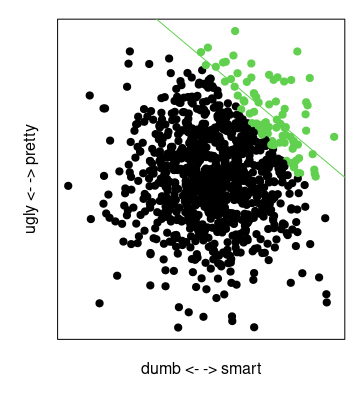There are two situations how this can happen.
Collider bias
A common way how the situation can occur is collider bias.
An example is in the image below. In this example, intelligence and appearance are statistically unrelated (there's not even an effect in this case as with the coin example below). But conditional on the sum of intelligence and appearance the two become correlated.

Invariant effect
With collider bias both A and B have an effect on C. In some special cases, the situation may also appear when B has a causal effect on A, but it does not appear as a statistical dependency.
The underlying reason why this counterintuitive situation can happen is because: When we speak about statistical independence between A and B then it doesn't necessarily mean that A and B have no functional/causal relationship.
Let's say that we flip two fair coins $B$ and $C$, and assign values $-1$ and $1$ to the sides of the coins. Let's define $A := B \times C$.
B C A := B*C
1 1 1
1 -1 -1
-1 1 -1
-1 -1 1
Now $B$ does influence the outcome $A$ but $A$ is not statistically dependent on $B$ alone. Namely we have that $P(A = 1) = P(A = -1) = 0.5$ independent of the value of $B$.
Variants of this case occur when $B$ is a variable that influences $A$ while leaving the distribution of $A$ unchanged. So this case happens when $B$ has an effect on $A$ that leaves the distribution of $A$ invariant. E.g. it happens when $B$ switches labels of a fair coin or dice.
This seems like a contrived case, but it is also a bit about a particular interpretation of probability. When we flip a coin, does it matter whether we start with heads up or tails up? Statistically speaking there might not be a relationship. But in the underlying physical process the starting position of the coin has (according to theory) an influence on the position of the coin after the flip. The situation may, after all, be considered deterministic; but we describe it as probabilistic because we have no complete knowledge about the begin state of the entire system and all the parameters that are involved in the outcome.

